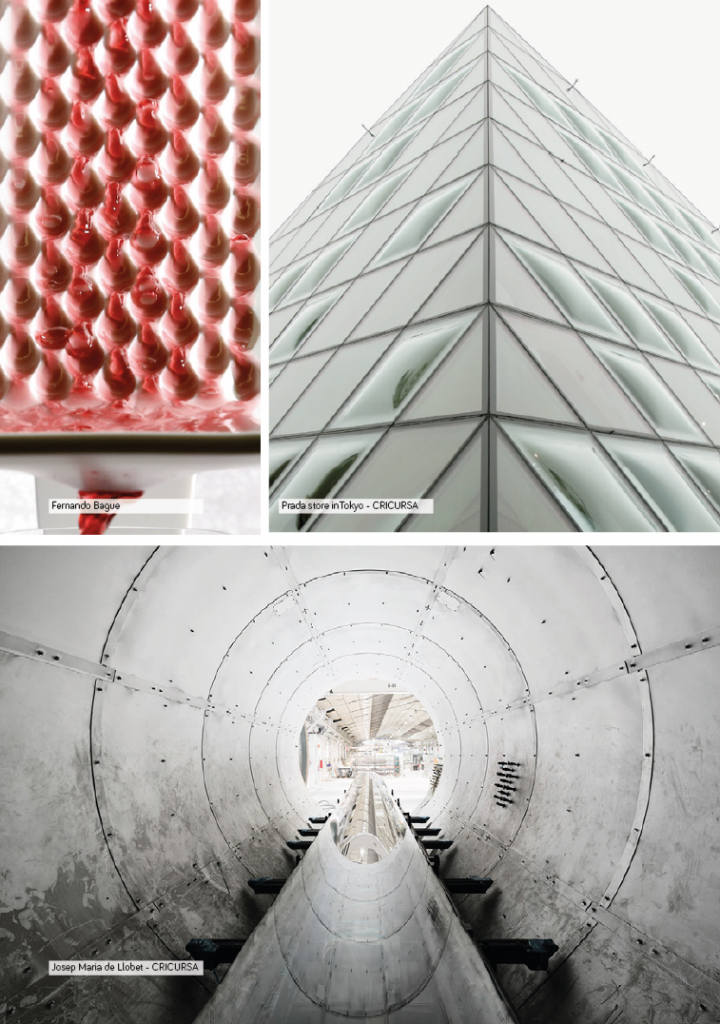SE.7 – Elective Seminar
LIQUID SKIN
Performative use of liquids in curved glass assemblies.
Tutor: Edouard Cabay
External experts. Resja Ferusic, Carles Salas
Cricursa Expert: Ferran Figuerola
Technical Advisor: Alexandre Dubor
The seminar focuses on the integration of liquids within curved glass assemblies or surfaces, whether as closed or open systems, in order to produce architectural effects or performance: climatic, energetic and spatial.
–
Liquids
If we consider architecture’s primary role as to protect from the environment, water lies high within the list of unwanted elements. Buildings are waterproof; water is the hazard, all construction detail aim to keep it out. However liquids have endless potentials in architecture: they change state, and form, easily; they have thermal inertia, can store energy, have both transparency and opaque qualities, can dissolve other materials… and, truly unique, falls from the sky – for free.
Glass curving
As water, glass is transparent, it refracts and reflects, reaches an almost liquid state when subject to heat, it is, in a certain way, malleable and settles into simple planar surfaces or potentially complex curved geometries. The process of forming glass is however complex due to the high temperatures of its fusion point, and the peculiar characteristics of its molding.
The seminar is a unique opportunity to work hand in hand with the Catalan world leading glass-curving company of Cricursa. The course is set up as a collaboration: our group will run a common investigation with a team of experts at Cricursa, we will be producing experimental glass elements in their facilities and testing them back at IAAC.
Digital Craft
One of the seminar’s principal objectives is to attack the theme of glass curving with the support of digital manufacturing means. In an early phase, we will work on a model-scale, thermoforming synthetic materials to simulate the behavior of glass and its properties, molding with analogue and numerically controlled means such as laser cutting, cnc milling, 3d printing… leading to prototyping at Cricursa, where we’ll explore the process of glass-molding, introducing new materials in the process and seeking to create new geometrical solutions such as differentiated or dynamic molds.
Outcome
The outcome of the course is the construction and installation of a 1:1 liquid live-performing glass prototype in Barcelona.
